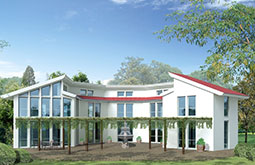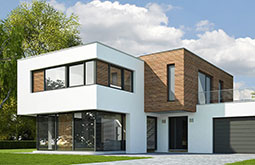Time Required to Render a 3D Image
Have you ever watched the 1995 movie Toy Story? It is a movie that was entirely represented with 3D rendering graphics. People worldwide loved the innovative approach, and since then, 3D rendering services took an advanced turn in the designing world.
What is 3D Rendering?
3D rendering is the 3D computer graphics process of converting 3D models into 2D images on a computer. 3D renders may include photorealistic effects or non-photorealistic styles.
A common question that every designer or client faces is, "how long does the 3D rendering process take?" You might be wondering why it takes a total of three days to complete 3D renders, even after setting up everything, including 3D texturing.
If you are curious to know the correct answer, you are at the right place. Read more to find out why it takes so long and how you can speed up the 3D rendering process.

Why does 3D Rendering take so long?
To understand why rendering gets prolonged, let's see how the process works. Basically, the simple answer is that many steps need to happen before the final renders.
A 3D render is a computer-generated image of an object or scene created by projecting polygons that define its shape onto the picture plane.
The first part is 3D models, transforming a 2-dimensional image into another by adding depth and dimensionality with polygons or other shapes made up from points.
The next step would be 3D texturing, where colors and textures can be added on top of the 3D models to generate the desired effect: shiny metal or plastic-y surfaces. On the other hand, 3D render farms are an easy way of creating still images, but the tone should always remain professional while dealing with clients. It may be unrelated, but it is a term that you must know.
Then it moves onto shading, which defines how light interacts with materials when they're lit. Finally comes the 3D rendering process as all these individual parts come together to create an animated scene that you'll see through your screen at home.
Now the reason why it is taking so long is because of the memory-intensive process. It might be because your computer specification is low, or you have not optimized all the elements properly in your 3D scene. Not only this, more factors make rendering consume a lot of time.
Top Factors That Affect Rendering Time
-
Computer Specification
Are you using a CPU or GPU for 3D rendering? It might sound like nothing to those who are not familiar with the hardware that they are using. But the difference in both processors can be a huge contributor to why your 3D rendering process takes long.
A GPU is significantly stronger in power than a CPU. A higher CPU speed also helps with rendering time. In general, the higher computer specifications you have, the better it will be for 3D texturing and rendering.
-
Output Resolution
The required output size for 3D designs has grown over the years from 720x480 pixels, a standard definition to 4k or 8k resolution. This is why renders may take time. Images higher in resolution take longer to finish as it is rendered one pixel at a time.
-
Photorealistic Rendering
A photo-realistic rendering means that 3D designs and 3D scenes have high-quality elements such as illumination, ambient occlusion, and depth of field. These features add realism to your 3D scene.
Depending on the setting and details, it may take days to make a single frame in photo-realistic rendering. So, if you decide to do it on a large scale, the delay in rendering will be an issue.
-
Shadows
When it comes to 3D rendering, there are two shadows in usage. One is ray-traced and the other is a depth map. A depth map is a quick render, but it has problems with resolution and artifacts.
Ray-traced shadows are rendered one pixel at a time during the 3D rendering process. This can take longer, so be careful about using ray-traced shadows or depth map shadows.
Regardless of what you add, 3D designs are highly resource-intensive services because it depends on many components being operated at one time. It also multiplies your graphical needs such as 3D texturing and other items from scratch.
How to speed up your rendering time?
If you want to speed things up, blaming the render engine or hardware configuration will not benefit you. To help you decrease the rendering time, here is a list of tricks and tweaks that will quicken the 3D rendering process.
-
Lessen the number of samples
To speed up the render, you can cut down on the number of samples used in your final product. There are many different approaches for this which will depend on the type of program and settings that you have installed.
Too many samples can have a bad effect on the 3D rendering process. "Samples" is nothing but the noise that appears while the scenes are rendered. As soon as you open the render panel in your software, you can see the "number of samples" option.
Although decreasing the number of samples may reduce the time, the result may have less clarity. Meanwhile, an increase in the number of samples does not mean that you get a better-looking render. So, be careful and choose the right balance of go-to samples and stick to it.
-
Upgrade Your RAM
Upgrading your computer's memory is a simple way to improve the performance of almost any device. Since high-resolution images take longer to render, upgrading your RAM will help you boost the speed of creation and the quality of the render.
RAM is like a decompression chamber for all the information that you are feeding. Swapping out your RAM with a high-performing version can offer a simple option to reduce the 3D rendering time.
-
Optimize the Tile Size
When you render the image using 3D software, you may have noticed the little boxes that appear on the screen. These are called "tiles”. Keeping the tile size too small can reduce the render speed.
Not just the number of tiles, but you can also keep the size of the pixels optimized for better results. This again depends on the type of processor that you use; GPU can render one tile at a time while CPU can render multiple tiles in one go.
-
Upgrade to a Better Software
Another reason why your 3D scene is prolonged is because of the software's problem. Not all 3D software is equal; hence some will be naturally inefficient in certain features. It all depends on how you want to render things.
It is better to experiment with different 3D software and see if they also contribute to delays. Who knows, the problem might lie in your machine rather than the design.
Limit Bounces
The number of bounces is directly responsible for render time and 3D texturing delays. The more bounces you have, the longer it will take to complete the render.
Although, it is essential to note that the more bounces you have, the more realistic the results will be. For example, if you limit the number of bounces to 4, it will increase the render time by 2 times.
-
Buy a Graphics Card
Most of the high-level 3D rendering process relies on the GPU to create the user interface. If your Graphics Processing Units are insufficient or if they are too old, it is time for an upgrade. Like RAM and software upgrade, swap the old graphics card to a new one that can handle many technical things.
-
Max Steps
Most of the 3D software offers the option to set up the number of max steps and step size. You can find this option in volume sampling settings. You can easily balance the render time by decreasing the max steps.
Conclusion
These were some of the most applicable and on point steps one must try in order to speed up the whole process of 3D rendering because time is money and when you can focus on multiple projects single handedly, why keep yourself occupied with only one by not finding proper way to get the speed to the project.
Also, these are some referential steps that one can take to make things work according to their plan but if these steps don’t work for you, it is ideal to outsource the 3D rendering process to reputed 3D modeling companies who specialize in this technique.




